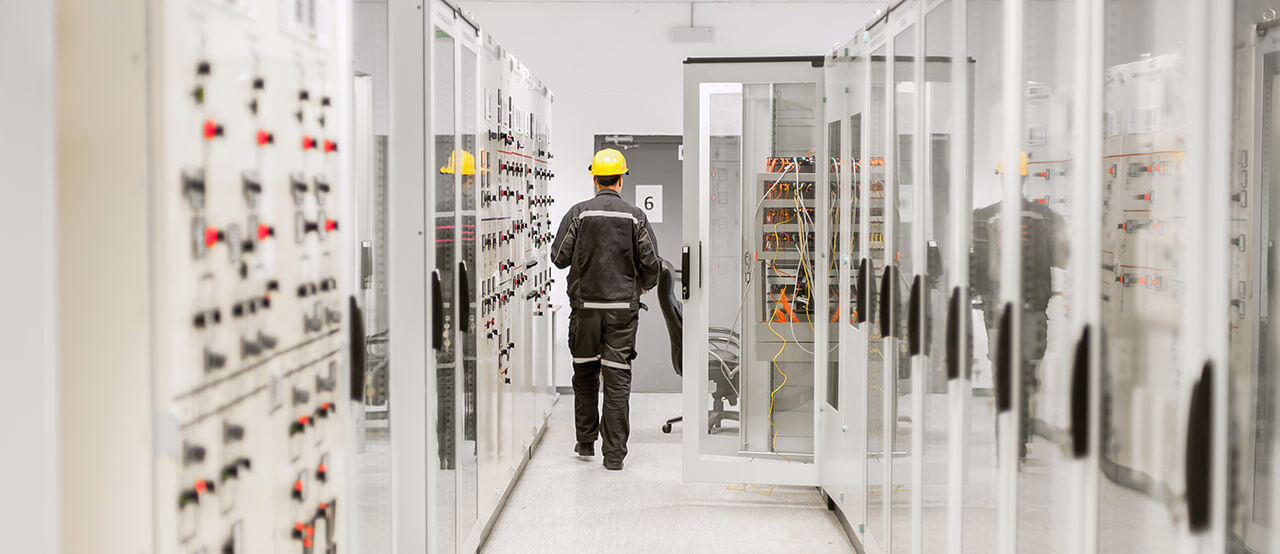Sustainability has become one of the great challenges for society and, of course, also for hospitals. In Spain, many hospitals and health centers were built decades ago and now need to be renovated to be more sustainable, both in terms of the efficient use of the electricity supply and the facilities themselves. All this with a clear objective: to achieve energy savings and reduce emissions and the environmental footprint.
Why is sustainability important in hospitals?
Although the main objective of a hospital or health center is to ensure people’s health, it must be taken into account that the mere hospital activity has an environmental impact (waste, emissions, etc.) and, therefore, also a social impact.
Hospitals are a major source of energy consumption. And it is that they exert constant use (24 hours a day, 365 days a year) of the resources necessary for their operation and, of course, of electrical energy. In hospitals there is no rest, activity does not stop and, consequently, energy consumption and the economic cost of maintaining it is high.
To guarantee the sustainability of the system and reduce its social and environmental impact, the only alternative is to be more efficient in the use of resources and energy. For this reason, it is vitally important that hospitals and health centers think about long-term sustainable development.
“Hospital activity will be more efficient and sustainable when they achieve greater benefits with the same activity as always but using the minimum available resources.”
Thanks to efficient use of resources, it will be possible to reduce not only emissions but also unnecessary financial costs.
More specifically and focusing on the use of the facilities itself, it could be said that hospitals (and in general any type of building) become more efficient the more they divide the energy they supply between the energy consumed (fans, air conditioning, heating , lighting, power for medical equipment and critical areas, etc.).

Tips to achieve hospital sustainability
Although energy efficiency is a basic pillar of sustainability in hospitals, there are also other aspects to be valued that contribute to making a health center more sustainable. We detail them below:
Energy efficiency
It allows saving energy and, therefore, the economic cost involved.
Ecological buildings
In hospitals or health centers already created, the only possible alternative to be sustainable is to be more efficient in the use of resources. However, the sustainability of any type of building begins in its own construction, using, for example, ecological materials or those whose environmental and energy impact is lower.
Use of renewable energies
In this case, we are talking both about the fact of having an energy system whose origin is clean and reusable energies but also about the fact that the building has the capacity to produce and supply energy thanks, for example, to panels solar.
Transportation
It is recommended that the fleet of hospital vehicles use alternative fuels or, for example, the incorporation of electric ambulances. Furthermore, the location of hospitals can help reduce emissions from transport. In this sense, the use of public or non-motorized transport to get to the hospital must be encouraged. This will be possible as long as the location is more or less central or close to train and metro stations.
Waste
Like any other activity, hospitals also generate waste. Therefore, as far as possible, it is recommended to apply the three R’s in the day-to-day life of hospitals: reduce, reuse and recycle. Likewise, it is worth mentioning the use of alternative methods for the incineration of those wastes that require special treatment.
Other areas to take into account in the sustainability of hospitals, could be, for example, the feeding of patients, offering zero kilometer food. It is also important to reduce water consumption by implementing measures for its treatment, conservation and recycling.

An efficient electrical power system
Safety and hospital electrical management is essential in the maintenance of hospital and health center facilities. In fact, these types of centers have to comply with a series of standards and requirements to ensure that both electrical installations and power distribution systems and medical machinery work properly and without any risk to medical personnel or patients, even in the event of possible adverse events.
In this context, there is a whole series of actions and measures that contribute to sustainability in hospitals. These measures can be divided into “simple or basic”, that is, those actions that do not require an investment, measures that require an investment but low cost and hospital security measures that require both investment and reconstruction of certain areas of the hospitals. We detail them below.

Simple or basic energy efficiency measures
- Control the natural thermal temperature.
- Review and perform periodic maintenance of electrical installations to detect possible failures or leaks that cause higher energy consumption.
- Check and maintain electrical and heating systems.
- Use LED lights, low consumption.
- Have medical machinery that has the option “energy saving use”.
- Eliminate the hot water system from the showers as long as it is not essential.
Low-cost measures for sustainability in hospitals
- Reduce lighting and use electric timers.
- Improve the insulation system.
- Constantly clean the pipes in charge of the electricity supply.
- Change those windows and doors that do not have thermal protection.
Hospital security measures that require investment and a reconstruction project
- Improve the electrical energy quality in the hospital.
- Insulate walls, ceilings and floors.
- Use solar energy to produce energy.
- Install hot water networks for shower areas if necessary.
On the other hand, the machinery and medical equipment of hospitals must also be taken into account. In health centers, there is an increasing use of technology to improve care and efficiency. Furthermore, telemedicine is a very close reality.
For all these reasons, it is important to have hospital electrical safety systems that are efficient from a consumption point of view and that, of course, guarantee both the supply of energy in critical areas and even in adverse times.
Building sustainable hospitals
As we have mentioned, sustainability in hospitals does not depend solely on the use and maintenance of available resources.
A correct use of raw material generates less waste, emissions and maintenance and operation costs, especially due to the energy demand required by hospitals.
In this sense, technology is the best ally for the construction and design of sustainable hospitals. Thus, the use of thermal insulation panels (ventilated facades, solar use, temperature control elements …), the commitment to the production and consumption of alternative energies (thermal, photovoltaic solar …), an efficient lighting system or the water recovery and conservation mechanisms facilitate sustainability in hospitals and contribute to significant economic savings.
In short, for efficient and sustainable management of hospitals, it is necessary to assess the design of the building but also its activity and daily operation, without forgetting the maintenance of the facilities.
The impact on the patient
The stay and good health of patients does not depend solely and exclusively on the medical treatment offered by health workers. In fact, there are studies that show how having views to the outside from the room facilitates a faster recovery of the patient and, therefore, a shorter stay in hospital.
On the other hand, as the Wealth Health Organization shows, natural ventilation is a basic tool in hospitals to save energy but also to control infections.

Conclusion
Sustainability in hospitals is possible, real and necessary. Its application is not limited to the operational or maintenance field, but it is possible to build a sustainable hospital incorporating energy efficiency and the use of efficient electrical energy systems from the conception of the building. All this will contribute to economic savings but also, very importantly, to a lower impact on the environment.



